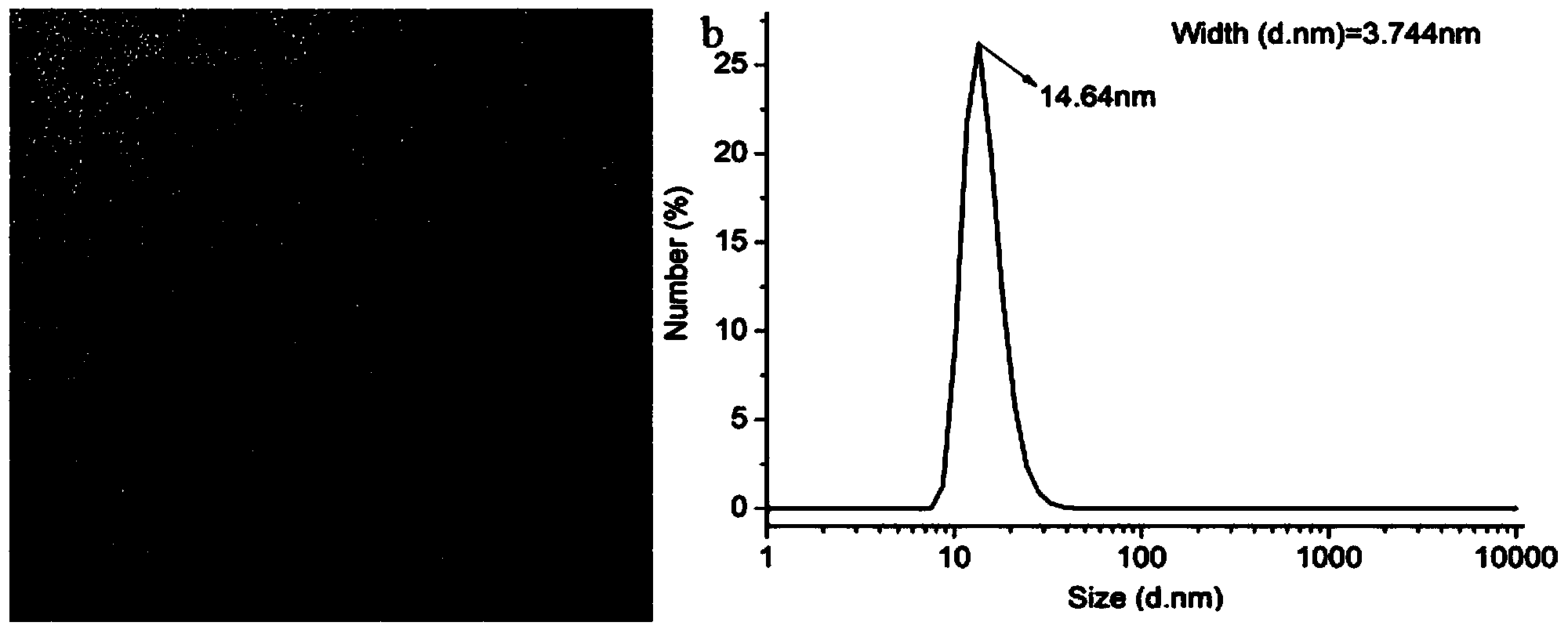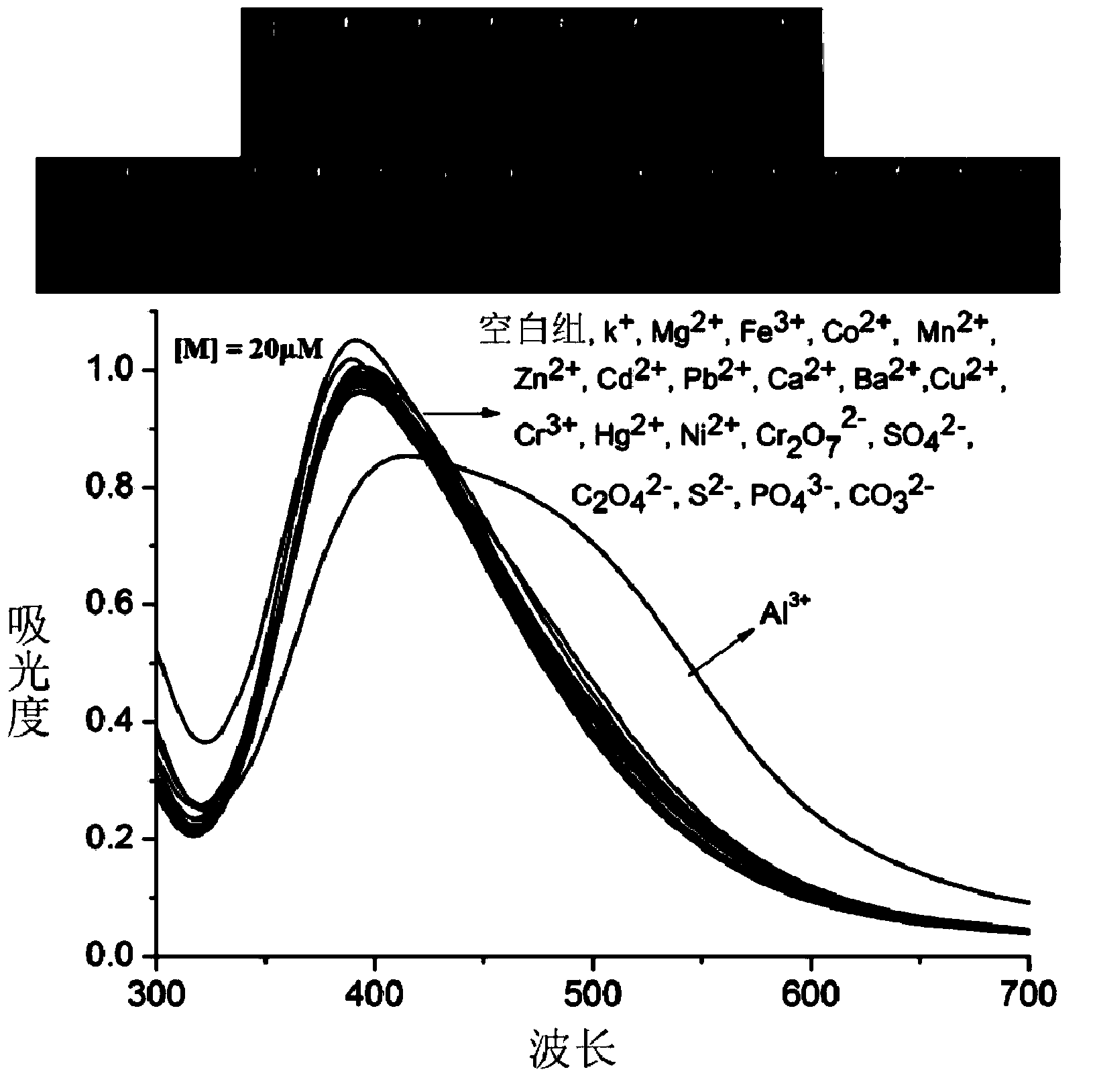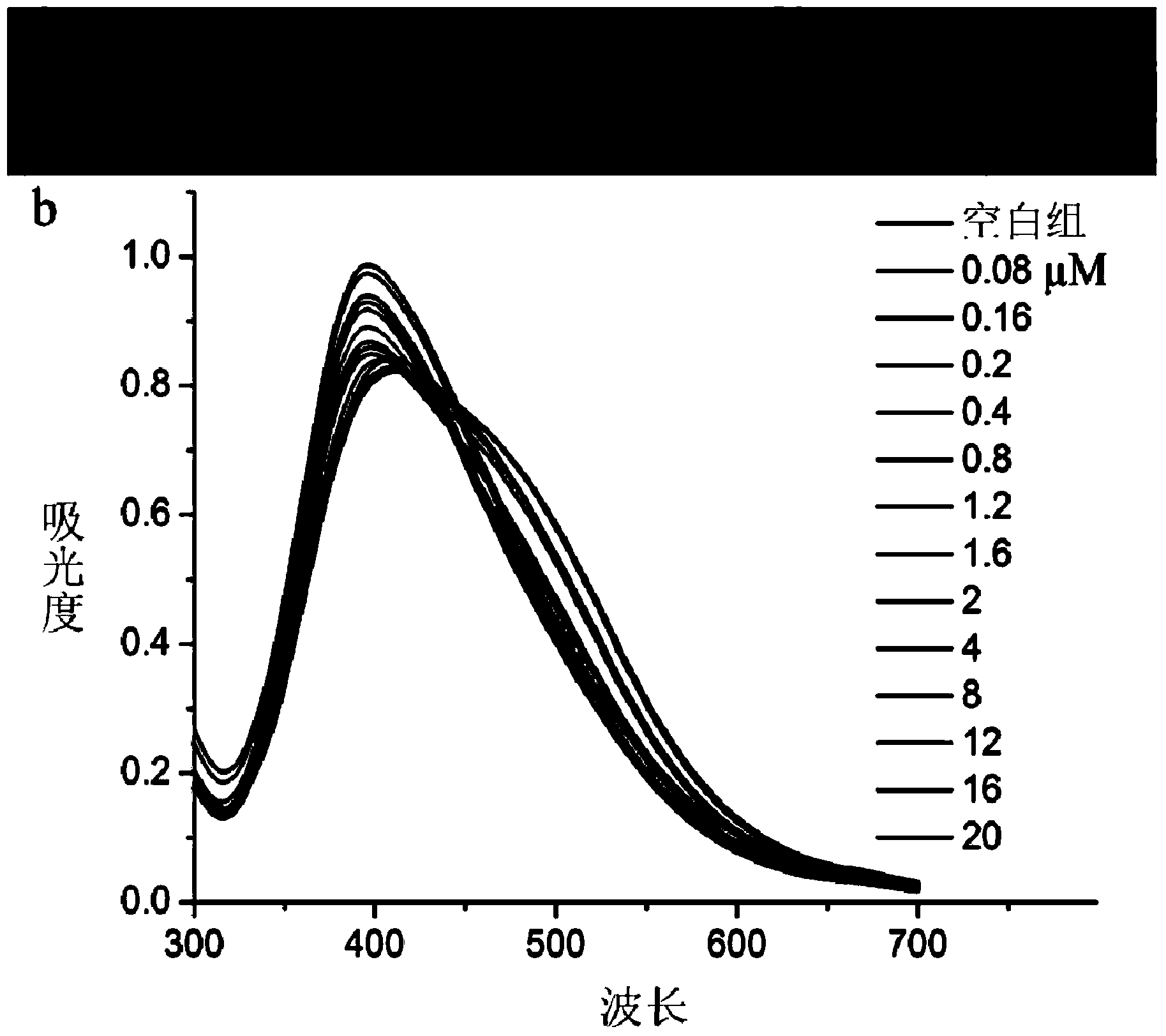Trivalent aluminum ion detection reagent and method
A technology for detection reagents and detection methods, which is applied in the direction of material analysis by observing the influence of chemical indicators, and analysis by making materials undergo chemical reactions. Dealing with complicated issues
- Summary
- Abstract
- Description
- Claims
- Application Information
AI Technical Summary
Problems solved by technology
Method used
Image
Examples
preparation example Construction
[0102] The reagent can be prepared by mixing the above-mentioned components, and a more preferred preparation method includes steps:
[0103] providing an aqueous solution of a water-soluble silver nanoparticle precursor;
[0104] Adding a reducing agent to the above solution to obtain a composition containing silver nanoparticles;
[0105] The peptide compound is added into the composition to obtain the silver nano particle detection solution wrapped by the peptide compound.
[0106] In another preferred example, the preparation method further includes the step of: adding amino acid compounds into the detection solution.
[0107] In another preferred example, the preparation method further includes the step of: adjusting the pH value of the detection solution to 4.0-10.0, preferably, adjusting the pH value of the detection solution to 5.0-8.0.
[0108] In another preferred example, the aqueous solution of the water-soluble silver nanoparticle precursor is a commercially ava...
Embodiment 1
[0148] Example 1: Al in river water samples 3+ detection
[0149] (1) Preparation of detection solution: Take 2.0mL 20mM silver nitrate solution and add it to 187.5mL deionized water, stir for 10 minutes, add 6.4mL 0.1M sodium borohydride aqueous solution, stir for 5 minutes, then add 4.0mL 1mM L -Glutathione (reduced) aqueous solution, continuously stirred at room temperature for 2 hours to obtain L-glutathione (reduced) coated silver nanoparticle detection solution.
[0150] (2) Collection of water samples to be tested: collect water samples at a certain depth (20-50cm) at three different locations in the river with a sample collection bottle, and then adjust the pH to about 5.0 with hydrochloric acid (also can be used with hydrochloric acid The sodium hydroxide solution of equal molar concentration is adjusted back), obtains the water sample to be tested.
[0151] (3) In the silver nanoparticle detection solution containing L-glutathione (reduced type) package prepared in...
Embodiment 2
[0158] Example 2: Al in water samples of industrial and mining, electrical appliances, and electroplating plants 3+ detection
[0159] (1) Preparation of detection solution: Take 2.0mL 20mM silver nitrate solution and add it to 187.5mL deionized water, stir for 10 minutes, then add 6.4mL 0.1M sodium borohydride aqueous solution, stir for 5 minutes, add 4.0mL 1mM dipeptide at room temperature Continue stirring for 2 hours under continuous stirring to obtain the silver nanoparticle detection solution containing dipeptide-coated silver.
[0160] (2) Collection of water samples to be tested: collect water samples at intervals (2 hours) at the sampling position of the waste water discharge port, then mix equal amounts to form a mixed sample, and then use hydrochloric acid to adjust its pH to be weakly acidic (if too acidic) , using a sodium hydroxide solution with the same molar concentration as hydrochloric acid for callback), so as not to affect the detection effect, and obtain ...
PUM
 Login to View More
Login to View More Abstract
Description
Claims
Application Information
 Login to View More
Login to View More - R&D
- Intellectual Property
- Life Sciences
- Materials
- Tech Scout
- Unparalleled Data Quality
- Higher Quality Content
- 60% Fewer Hallucinations
Browse by: Latest US Patents, China's latest patents, Technical Efficacy Thesaurus, Application Domain, Technology Topic, Popular Technical Reports.
© 2025 PatSnap. All rights reserved.Legal|Privacy policy|Modern Slavery Act Transparency Statement|Sitemap|About US| Contact US: help@patsnap.com



